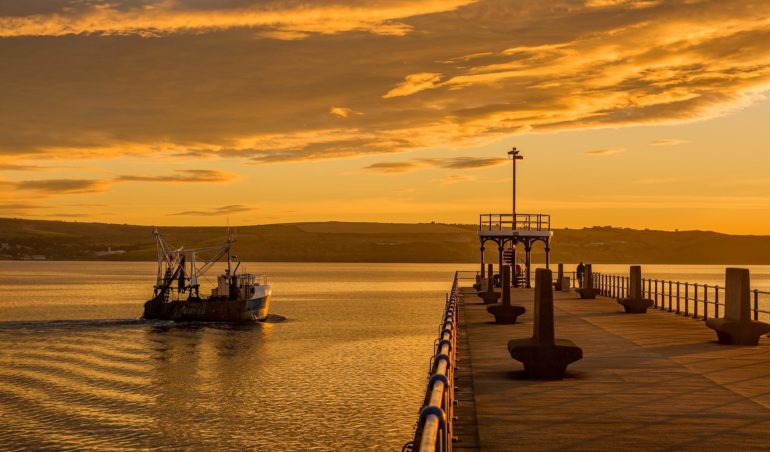A team of researchers, using satellite data and other analytical tools, has identified companies fishing in high seas—waters that lie outside of national jurisdiction where fishing has raised fears about environmental and labor violations. The study, which appears in the journal One Earth, is the first to link companies to fishing activity in these largely unregulated areas.
“There is a lot of concern about companies that operate on the high seas, simply because there they are beyond the reach of any nation’s laws and regulations,” says Jennifer Jacquet, an associate professor in NYU’s Department of Environmental Studies and lead author of the peer-reviewed study. “By connecting those boats with specific companies, this study takes a first step in enhancing transparency—we now know a lot more about who is profiting from fish catches in the global commons.”
The findings illuminate a significant element of commercial fishing. Previously, researchers could only identify which countries reported catching fish on the high seas, which account for 60 percent of the world’s oceans and therefore represent a substantial proportion of waters that lie beyond the reach of national jurisdiction.
“We also have a much better sense of what we don’t know,” adds first author Gabrielle Carmine, a doctoral candidate at Duke University’s Nicholas School of the Environment who worked with Jacquet as an NYU undergraduate. “The corporate actors we know vary by fishing gear type and by location in the high seas. For example, we know far more about the trawling fleet than the longline fleet and more about the Atlantic Ocean than the Western Tropical Pacific.”
Species caught on the high seas are fished by industrial fleets and destined mainly for high-end markets in the U.S and Europe. Past assessments of high seas fish populations show that fishing in these waters has led to extraordinary declines in the abundance of many open-ocean species, including several species of tuna, swordfish, and marlin. While fish catches are reported by nations, many companies catch and profit from fish in the global ocean, where fishing is subject to few regulations because the high seas lie beyond national jurisdiction.
Combining data that detects fishing vessels made available from Global Fishing Watch with other public databases, such as regional fisheries management organizations and shareholder information, the team’s analysis showed 1,120 corporations owned nearly 2,500 high seas fishing vessels in 2018—or approximately two-thirds of the total detected fishing effort in these waters.
However, high seas fishing is notably concentrated among a small number of entities. The Korean companies Sajo Group and Dongwon, which owns the U.S. subsidiary Starkist, were in the top 10 of the most active corporations on the high seas, along with a handful of Chinese corporations and one U.S. corporation based in Hawaii. Approximately 100 companies, based in the United States, the United Kingdom, China, Taiwan, Russia, Spain, the Netherlands, and South Korea, among other nations, accounted for more than one-third of high seas fishing during the studied period.
“These results provide a unique lens through which to view accountability for the use and protection of global ocean biodiversity,” observes Jacquet.
Banning transshipment at-sea necessary to curb illegal fishing, researchers conclude
More information:
One Earth, DOI: 10.1016/j.oneear.2020.11.017
Provided by
New York University
Citation:
Satellite data identifies companies fishing in high seas (2020, December 18)
retrieved 18 December 2020
from https://phys.org/news/2020-12-satellite-companies-fishing-high-seas.html
This document is subject to copyright. Apart from any fair dealing for the purpose of private study or research, no
part may be reproduced without the written permission. The content is provided for information purposes only.



